Cisco’s Oliver Tuszik On Partner Profitability, COVID-19, And How XaaS Push Is ‘Partner-Led’
’Whenever massive changes are around us -- and we’ve learned this during COVID – we’ve never been closer with our partners. When the going gets tough, we stick even closer together,’ Cisco Channel Chief Oliver Tuszik tells CRN.
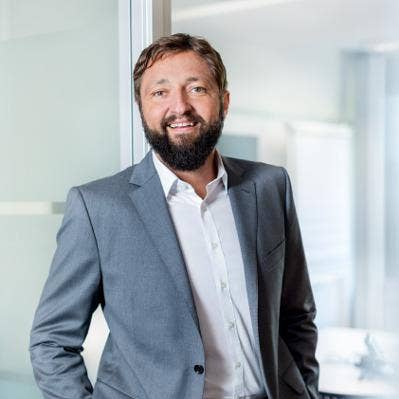
As Told By Tuszik
Cisco Systems has spent the last several months making big moves. The tech giant is in the midst of transitioning the majority of its portfolio to an as-a-service model and to go along with the changes it’s seeing in IT consumption and customer requirements, Cisco’s partner organization is making some of the biggest changes its made in more than a decade to its partner program and its tools.
San Jose, Calif.-based Cisco announced it was dropping the number of partner programs from upwards of 12 disparate programs to one unified program for Cisco partners of all kinds. At the same time, the company is also on a mission to greatly reduce the number of tools and separate platforms that partners have to access in order to work with Cisco – boiling it all the way down from 166 disparate tools to a single, unified platform over time.
It’s no secret that the COVID-19 pandemic has prompted sweeping changes across many industries around the globe, and Cisco, with the help of its partners, jumped in to help businesses stay up and running with the IT resources they needed, said Oliver Tuszik, senior vice president of Cisco’s Global Partner Organization. While partners may have had some time on their side to make the pivot toward software and managed services last year at this time, the clock has now run out, Tuszik said.
Cisco Channel Chief Tuszik sat down with CRN at the Cisco Partner Summit 2020 Digital event this month to talk about everything as a service, or XaaS, the battle against channel conflict and partner profitability associated with the selling motion, the impact of COVID-19, and what partners can expect to see from Cisco heading into 2021.
Here’s what Tuszik had to say.
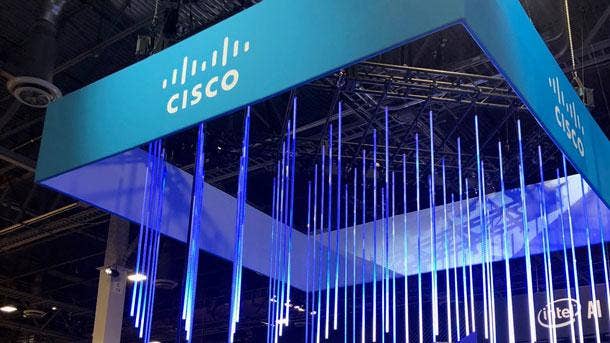
Tell us about the dedicated teams that the Cisco partner organization now has in place to support the company's pivot toward XaaS.
First of all, the most important thing is that we are not another one jumping on this train of [everything] as a service. This is something we’ve been doing for more than eight years – we’ve always engaged with our partners to deliver managed services. To give you a rough number, there’s more than a thousand partners globally that have more than 2,300 offerings already that they are bringing into the market behind this one, so bundled in this, there’s about $5.3 billion of Cisco gear sold in a managed, as a service model. So now, because the shift is going faster and there’s more demand at the market, there’s also more requirements coming up from our partners, so we’re doubling down in many ways.
There’s now a dedicated team that is ensuring that we develop and provide managed services [and] as a service offerings. What does that mean? It means our portfolio of products will be more ready for as a service and managed services – this is more about automation API’s, but it’s also about building new solutions that are easier to be turned into a managed offering. So, you might have a consumption-based platform, or you might offer software and hardware services altogether. It is all focused on being partner-led, to be very clear. My team -- the number one priority is to ensure that whatever portfolio we have and whatever way the customer wants to consume this, we enable our partner to serve them this way. It’s also how we incentivize, how we develop programs, and how we ensure that we help more customers to integrate these offerings or managed offerings.
Last but not least, there will be dedicated teams [within] the partner organization in the regions that are working with local partners. Because the setup is always the same -- the closest link to the partner is within the region and they should not develop a single solution to everyone. We are ensuring that we build up a kind of standard offering that then utilize the field to develop unique solutions. The most important part is, we develop offerings that makes it easier for more partners to create their unique portfolio or value to the customer. With this, we achieve two important things -- we create a higher value for customers and help [partners] reach more customers, and on the other side, we are ensuring our partners make money. None of our partners are a charity -- they are all there to make money. So, we ensure that they can grow a profitable business, they will be long term Cisco partners and continue to create value.
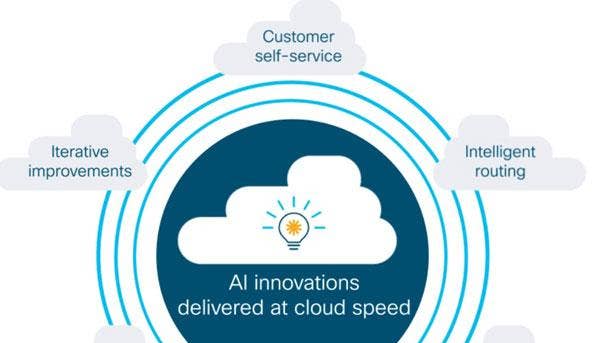
How is Cisco working through the partner profitability piece of the XaaS approach?
We are working through this and let me be clear, we have an existing program which is called Cisco Cloud and Managed Services Program [CMSP]. But what we are realizing is that most of our structure is built around the classical resell motion. We added on top of this one and we had all the necessary things, but now, when you when you continue adding things, the construct starts to be a bit more complex. So, what we are doing is taking all the requirements and simplifying it into the much easier to handle, more agile structure. This gets to the managed services part. Measuring the managed services business of a partner by the amount of product they are selling would completely miss the value. Our new program are only focused on customer views. What kind of value is the partner adding to the customer? If we want to measure partners as managed services providers, we should not look at your amount of resell business that they do. We should look at the volume they are managing, if they are renewing, and the recurring revenue and subscriptions.
By the way, when you measure the software, like in the case of a company writing a wonderful application on top of the Meraki platform, they maybe will never sell Meraki, but they create a completely different value. So, I need to measure, support, and quantify that in a completely different way. The goal logic is more like a kind of guarantee of the customer that they get reliable quality based on the Cisco product, but in the past, we were measuring [based on]; does [the partner] understand the technology? Are they able to fix a problem within two hours? Etc. The software [partner]… measuring them on this would be absolutely nonsense because we needed a new method – like are they utilizing the APIs the right way? Do they provide cloud-native, reliable software? It’s a completely different logic. With this change, we are building out new metrics to measure [partners] and automate the process behind it.

How will the new partner program support Cisco's focus on as a service and future goals?
We will have four kind of goals, or partner programs [within the new partner program]. They are all utilizing the same logic, but they are completely independent, and on the other hand, easily combined. Now, [the partner] may have a reseller backbone, but they might also have an increasingly strong managed service background, or, they might start to do software development, or they may be become a consultant -- an advisor. In the past, I was measuring their advisor business or software business with the same logic as the reseller or systems integrator. Of course, that doesn’t work. Now, we will give them the chance to decide what kind of business [they do] so that they get the right support. They get the right incentives and they are measured in the correct way. This is a massive change we are driving. And we are doing this change without destroying what makes us successful now. We love companies that are selling our hardware and are integrating it in the infrastructure, and we will continue to support these partners. But there’s been some changes in the market that we addressed locally with smaller programs that we are bringing to the next level.

How are partners reacting to the shift toward XaaS and is there concern about channel conflict?
First of all, we’re not shifting to everything as a service, we are accelerating this [strategy]. I’ve seen some of the competitors, and some are making it seem like the world has changed overnight and this is completely new. I was doing managed services when I was running a partner [organization] more than eight years ago. We called it something different – often it was called outsourcing and there were many managed offerings in the past. But what we are now doing is bringing it to the next level.
Partners are saying; “Great!” They love it. But whatever we announce, there is a little risk of going direct. The fact is, we did this very successfully for a long time. Yes, there will be more engagement from our side. But it’s not like we are starting to build up a managed services division. We don’t have a managed services business, but we will build up programs that will be designed and can be implemented in a way that [makes it] much easier to create a managed offering [for partners].
There’s new routes to market and those [routes] will include [Software as a Service] SasS offerings, and some of the SaaS offerings are highly automated and there’s a lot of things that no longer need to happen manually, by a partner or by Cisco. Whenever you talk about SaaS -- when you look at the big SaaS portfolio that is available in the world -- we see that there’s more and more value from partners coming in on the integration on the software [and] we’re adding on top of this one. So, there will be shifts. The feedback I have gotten so far was; “Thanks a lot. Finally, you listen to what we were requesting.”
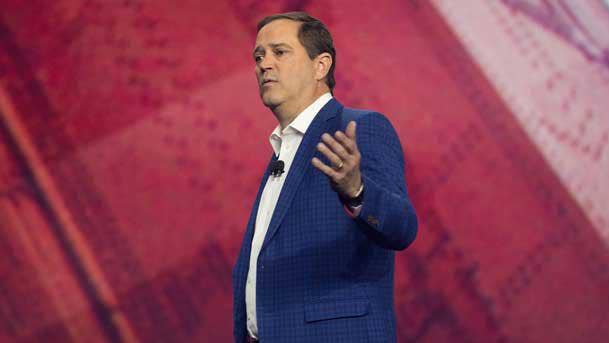
Cisco CEO Chuck Robbins (pictured) talked a lot about adoption this year at Partner Summit. Is that still the big opportunity that partners should go after?
Yes -- I think I was on stage with Maria [Martinez, Cisco’s executive VP and chief customer experience officer] two years ago [talking about this] and last year, we became clearer that adoption is not an option. Jeetu [Patel, senior VP and GM of Cisco's Security and Applications business] said it -- the best proxy for success is how users are using the product. So, we need to shift our focus from how we ship the product or maybe install it, to, is the company or end user using the product so that they see the full value? We see our partners driving this.
The facts are very simple. The more you invest in this one, the higher your share in services is, the faster you’re growing, the higher the attach, the higher the renewal rate. The value to the end customer is increased. So, we are shifting everything. The difference when you take the old-style outsourcing – it’s not an improvement in quality. When we talk about now a managed service; it’s more defined as you deliver a service to my end customer and it doesn’t end with the installation. We will be pushing very hard [to ensure] the customer experience, every day, is incredible. It’s not about being okay, or, [the customers] doesn’t complain. We need to define customer success completely different in a managed or as a service offering. We will be focusing on adoption. [Partners] should estimate that lifecycle capabilities; the certifications, will be key if not mandatory one most of the programs. To be very honest, if you are not investing in these capabilities and are not focused on this one, you should not worry about Cisco. You should worry about the value you’re giving to your end customers.

How big a role did COVID-19 play in some of these changes and updates here with Cisco's selling motions?
I’ve been asking myself this since it happened. When this happened, I had a session with my team and said, “I believe this will change everything. Now let’s look at our strategy.” And we’ve not been smarter than anybody else and we didn’t predict anything like this, but the thing that happened is it accelerating what we said the year before. You might remember Perform and Transform. You might remember that I said we need to focus on a new mindset, managed services; the lifecycle. I told partners two years ago, you might have a year’s time. Now, after COVID, I told them, I’m sorry, there is not that much time left. All that we were doing and investing in got an incredible push due to COVID. It changed dramatically the minds of the customer. We saw two kinds of customers -- one customer that now is saying; “Thanks for pushing us so hard to drive a more flexible infrastructure to enable remote work.” And there’s others that have said; ”I need your help. I need to change everything over the weekend.”
I don’t believe we’re at the end of the story, because we just went through the first phase of change, there will be other changes coming. No one knows what the future will bring. Just look at the recent amount of GDP growth and now, Germany, France, and other countries going into a full lockdown again. I didn’t predict this, but it’s pretty clear that we need to be flexible to adapt to these changes. We see that our partners are doing pretty well. And one of the reasons why Cisco is as strong in this environment as it is, is because together with our partners, we’ve learned to be more agile so we can act faster. When you look at what we did during COVID, together with our partners, how we shifted our focus and our capabilities, we did things we never would have never thought we would be capable of, but together we were able to adapt and I think we’ll continue to be able to continue to adapt.
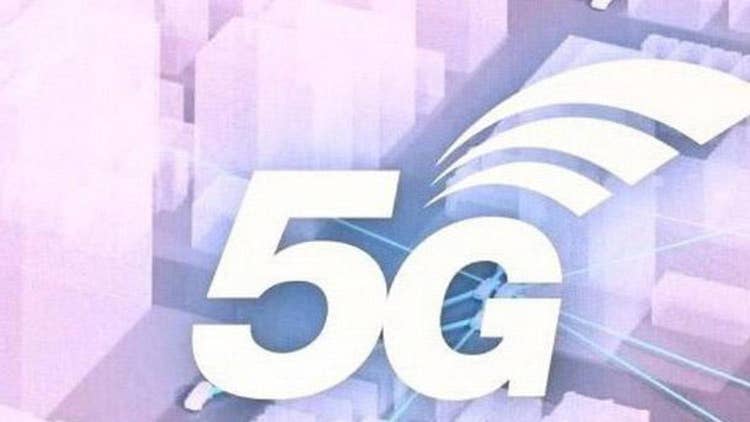
How big Is the opportunity around emerging technology, such as 5G, for partners?
The fact here again is that COVID was an accelerator. I just had a good discussion with one of my partners and they said that they need to provide every manager and every executive absolutely first- class video connections at home. In some areas, that would not be possible. So 5G, for the latency and the bandwidth, becomes an interesting opportunity for edge power that we need to deliver on. This is an opportunity also for partners. Of course, there is a growth with 5G networks in general and in certain countries, there’s even the allowance to build private 5G networks, which will be something that needs to be integrated into existing networks. So, I believe there’s an acceleration on [5G] but it’s less that there is a new application that would really require this bandwidth on a mobile device. It’s more about how to get full-speed internet with low latency, reliably, to all the home right now. It’s an interesting playing field. We still need to find out how fast these networks are building up [though] because we still need the providers to do that.

With many Cisco executives recently taking the company up on its early retirement offers and leaving the company, will Cisco be relying more heavily on its partner community?
With about 90 percent of our business going already through partners, it’s difficult to double this one – it’s pure mathematics! But, first of all, there’s always an opportunity for partners to capture more and this will continue. This change we are going through -- Cisco is so full of incredible people. -- we are able to continue what we’re doing even if some of our people are going for retirement. If I would retire tomorrow – and nobody offered it to me -- but if I would retire, the partner model from Cisco will continue in the same way. Keep in mind, we’ve done this for 25 years. There are other companies that are proud that they’ve been doing it five years. We’ve been doing it continuously, reliably, and predictably for 25 years.
Whenever massive changes are around us --and we’ve learned this during COVID -- we’ve never been closer with our partners. When the going gets tough, we stick even closer together. Are we perfect? Am I satisfied? No. There’s still a lot of things we need to do. But it’s great to see how this partnership works in difficult times.

What's your message to partners heading into 2021?
I would say, first of all, the path of commitment has never changed, but our roads are continuing to change and faster than ever. There are new routes to market and new ways customers want to buy and consume, and we together need to serve them. It’s not like we know what they are and we’ve spent the last few years on it. It’s an ongoing development and we need to adapt fast to changing customer needs and these needs could change depending on segments, on markets, and on industries. We need to build up the capabilities to deliver the highest value, in whichever route to market, for our customers. Cisco has a responsibility to support the partners in regard to the entire portfolio, but also the programs to be relevant and profitable.